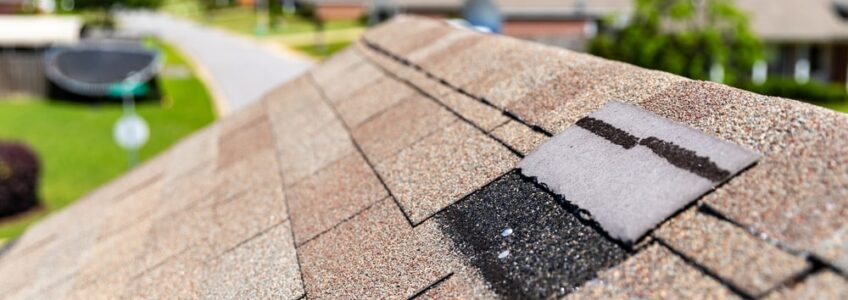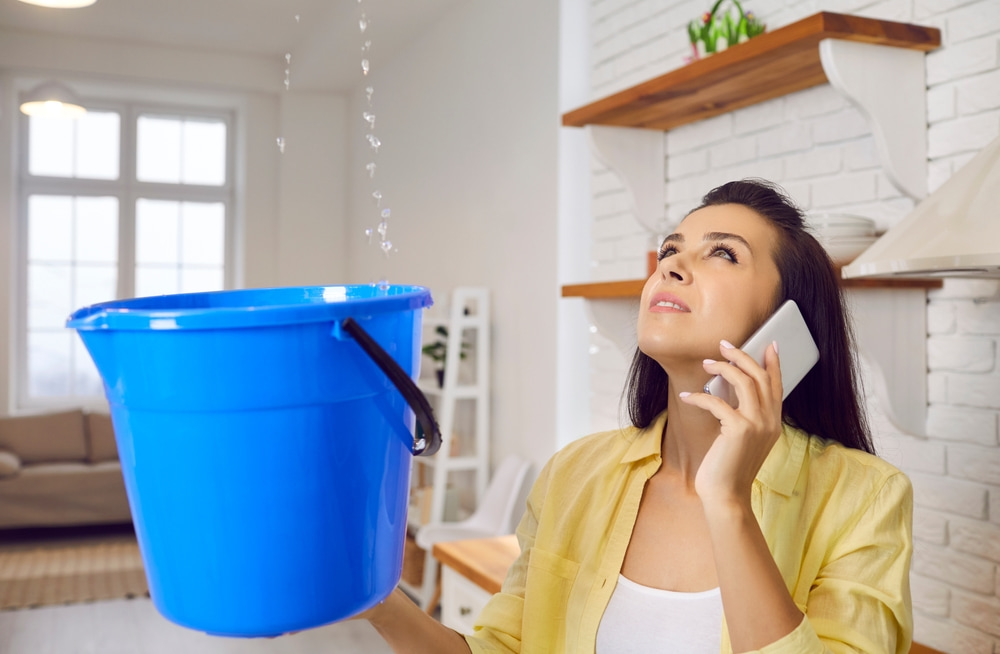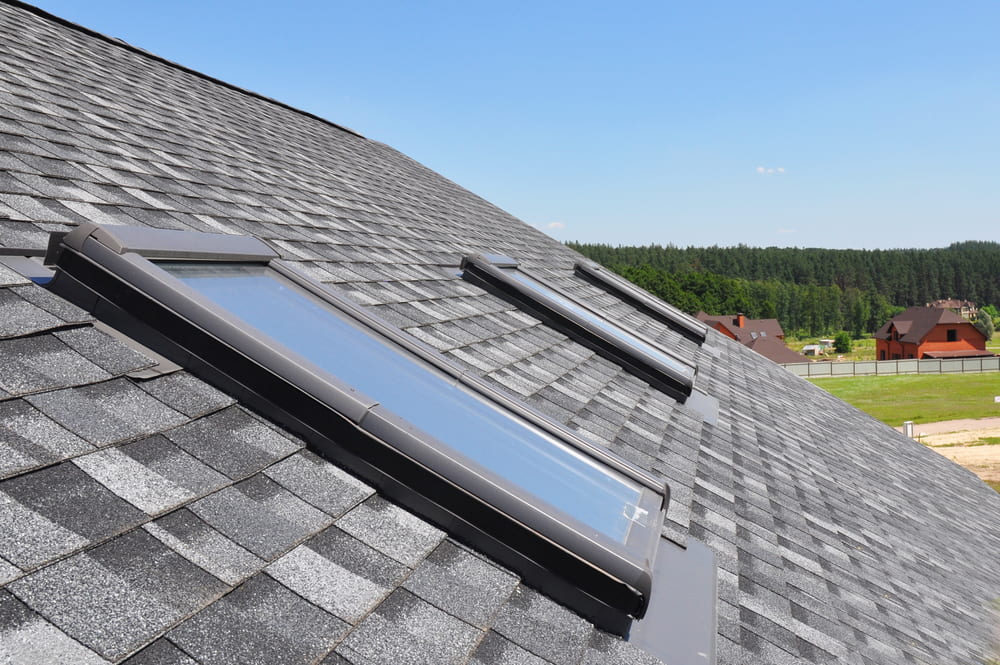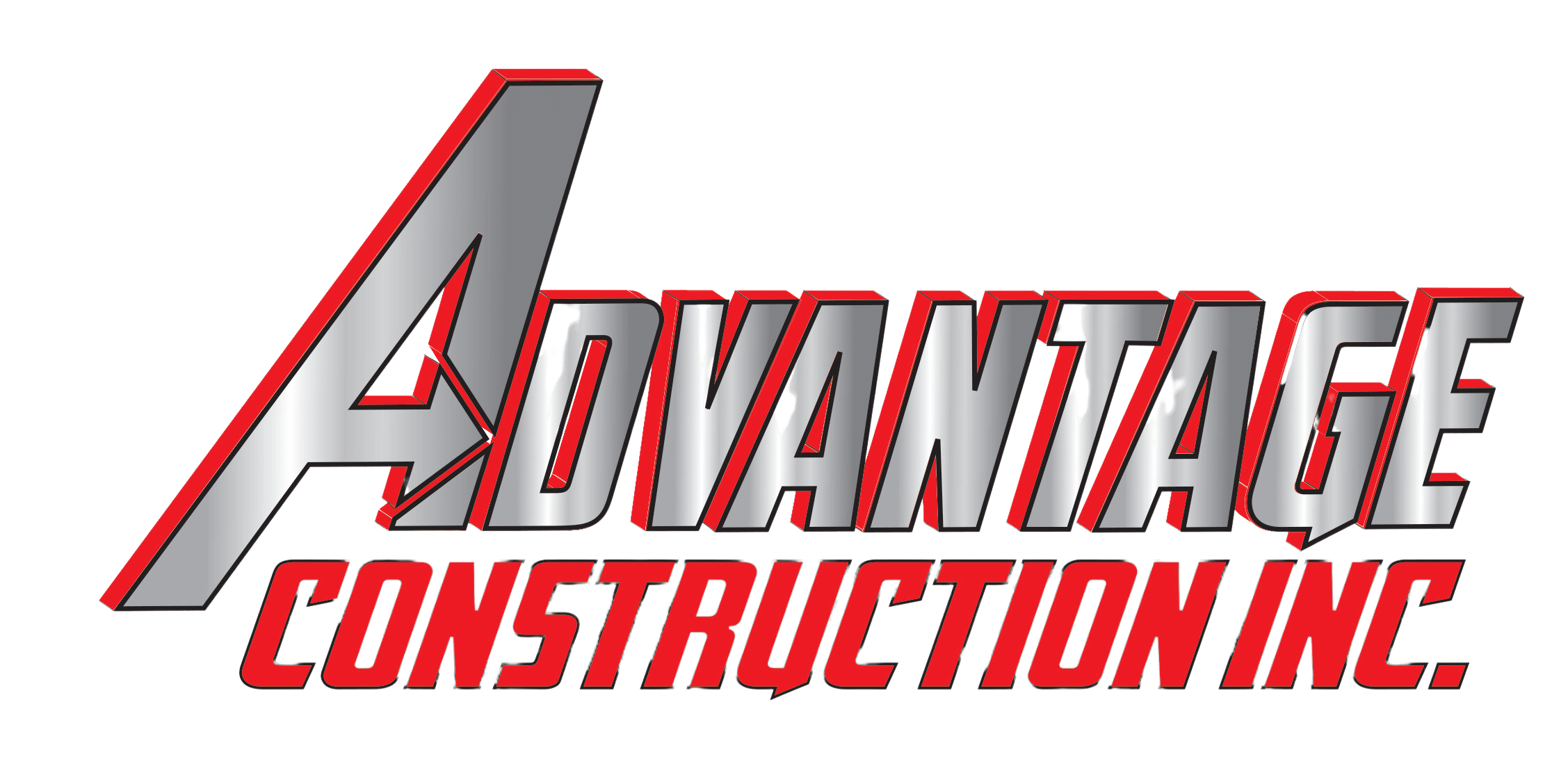
Do you suspect that your roof may be leaking? By the time you notice water dripping from your roof or other major signs such as missing shingles and spots on your ceiling, it means that your roof has likely already been leaking for a while and your house may be exposed to water damage. This can be extremely detrimental to your home and if left unattended, can escalate to property damage, endanger your safety, and result in costly repairs.
Like many homeowners, it’s easy to think that a leaking roof is only a structural problem, however, constant water intrusion poses many more health and safety risks. These risks can include molding, rotting, destabilizing structures and even fire hazards-none of which contribute to a safe and healthy living environment.
As soon as you notice any signs of a leaky roof, we recommend taking proactive measures to contain leakage and prevent costly water damage, ensuring that it doesn’t escalate to major problems.
While there are numerous dangers a leaky roof poses to you and your home, we’ll focus on the five most common ones that many homeowners overlook and how to prevent them.
Rotting Frames
When water leaks through your roof constantly, it’ll eventually find its way into your home’s framing. Over time, the leak will damage the framing, causing the wood to rot, which ultimately compromises the frame’s integrity.
In most cases, wood used in the home’s interior is not treated as thoroughly as outdoor wood and is prone to rot when exposed to water from a leaky roof. Signs of water leakage such as drips or ceiling spots indicate that the roof leakage may have already advanced to your home’s framing.
Rotting wood frames in your home can cause several structural problems, including:
- Deteriorated support posts and beams
- Damaged roof decking
- Rot in ceiling joists
- Roof collapse
Resolving these issues is not always a simple process, unfortunately, and we recommend hiring a professional when dealing with serious structural damage.
A skilled contractor will fix the damaged framing by draining the water, drying out the framing, replacing rotted wood and assessing the structural integrity of your home.
Mold in Your Home
The presence of mold in your home’s interior is one of the most common signs of water damage that may result from a leaky roof. Water leakage creates a damp environment that is conducive for mold growth. When mold sets in, it quickly spreads to other areas.
Mold in your home creates a hazardous environment to live in as it poses serious health risks, such as:
- Nasal congestion
- Rhinitis
- Inflammations
- Asthma
Getting rid of the mold growing on surfaces such as walls, floors, and ceilings is a tedious task, but can be achieved with homemade solutions. However, if the leakage is not addressed, the problem will resurface.
If you notice signs of mold growth that can also be characterized by a musty smell or dampness, reach out to a remediation company to assess the severity of the damage and to mitigate it before it spreads to the rest of the house.
Damage to the Attic and Insulation
 The first area of your home that a leaky roof typically affects is the attic insulation. When water seeps into your attic, your insulation will clump up and lose some functionality, such as inhibiting heat transfer. Attic insulation is moisture-sensitive and loses most of its value when it gets damp.
The first area of your home that a leaky roof typically affects is the attic insulation. When water seeps into your attic, your insulation will clump up and lose some functionality, such as inhibiting heat transfer. Attic insulation is moisture-sensitive and loses most of its value when it gets damp.
Most attics are made of fiberglass, which is said to be waterproof. However, when fiberglass is exposed to water, it loses its thermal resistance property, exposing your home’s interior to heat loss.
With a damaged attic, your home will be cold during the rough Minnesota winters, hot during summer, and your HVAC system simply won’t suffice. What’s more, attic damage can lead to damaged ceiling light fixtures.
Thankfully, an expert roofing contractor can help repair or replace your roof if it’s showing signs of leakage.
Damage to Drywall
Drywall separates your home’s rooms with walls and shouldn’t get wet. After the leak has damaged the attic insulation and ceiling, it may start seeping into the drywall. As water drips down to your drywall from a leaking roof, it gets damp and soggy. If you don’t identify the source of the leakage and contain it, the drywall will eventually buckle and fall apart.
If you notice that your drywall is changing color or has mold build-up, the leakage in the roof might be getting worse and should be acted upon immediately.
Electrical Damage
One of the most dangerous hazards of a leaky roof that you might not expect is electrical damage. When water penetrates into your property’s electrical wiring, it may cause electrical shocks, damage to the electrical wiring and worst case scenario: fire hazards.
Electrical damage can also affect lighting fixtures, which may require replacement if exposed to water. If you notice sparks from your electrical wiring or signs of water near an electrical circuit, your home may be exposed to electrical damage.
It’s crucial to contact an electrician to assess the source and extent of the electrical damage before it escalates. You should also contact a roofing expert to repair or replace your leaky roof to prevent further damage.

Have a Leaky Roof? Advantage Construction Can Help
A leaky roof is a serious complication that can cause a series of rapidly cascading home interior issues. Fixing your roof as soon as you notice signs of deterioration can save you from extensive water damage to your home-and the costs associated with repairs thereafter.
At Advantage Construction, we pride ourselves on providing professional roofing services for all our clients’ needs. Our team of experts will examine your roof, locate the roof leak, and fix it to prevent hazards and further damage.
Contact us today for all your roofing requirements, from repair to replacement.
